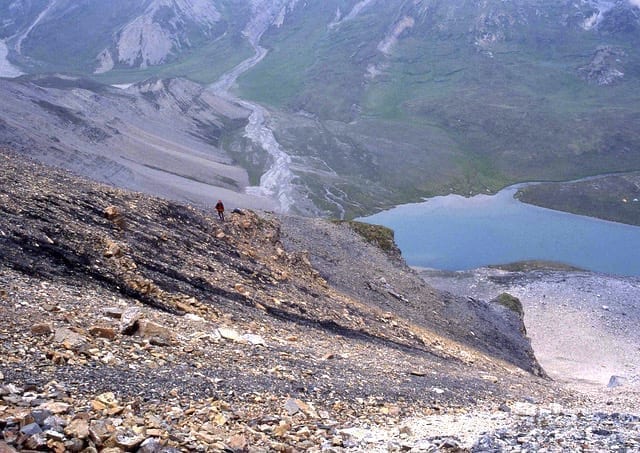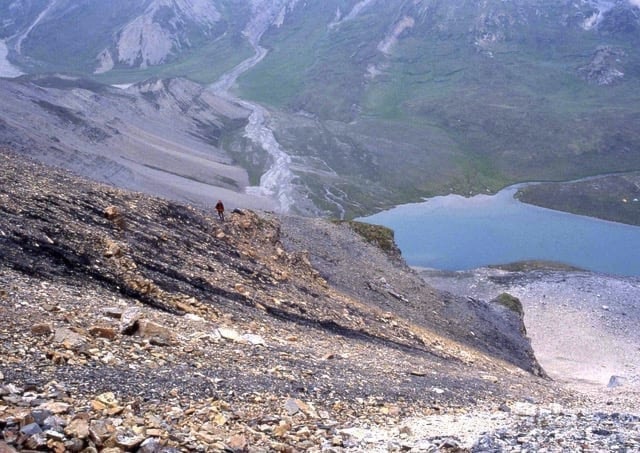
About 500 million years ago in what is now Northern Canada, the ocean floor was covered in a network of tunnels built by prehistoric worms.
Some of the structures were inhabited by predatory worms that used slender, tube-like burrows to ambush unsuspecting prey. Others were made by species that inched through the muck looking to feast on organic matter.
The discovery of the fossilized tunnels suggests that life in our early oceans evolved much differently than previously thought, according to a study published this month in the journal Geology.
The scientific consensus is that the deeper parts of the planet's primordial seas were uninhabitable because they did not contain enough oxygen. This allowed for the fossilization of soft-bodied creatures like those found in the famous Burgess Shale near Field, B.C.
It was thought these fossils had to have formed in oxygen-poor environments, where they would not decay or be eaten by other animals, but the discovery that worms were thriving in these environments is challenging that belief.
Brian Pratt, a professor at the University of Saskatchewan and an author of the study, discovered the rocks containing the network of worm tunnels while doing PhD research in the Mackenzie Mountains in 1983.
“The weather was lousy and it rained every day, not good for doing the kind of geology I was doing, so it took some fortitude,” recalled Pratt. “In the early evening when the sun finally came out, I happened to stroll down the valley a kilometre or so and hammered on some Devonian limestone, which yielded some unexpected trilobite fossils, which I collected. On my way back to camp I was hopping across a creek and saw these greenish shale rocks which I had not encountered on the ridge high above camp, and I saw right away black ribbons and blobs which I guessed were fossilized worms.”
Pratt took samples of what he'd found and returned to the site in 1998 and 2004 to continue studying the fossil-bearing rocks and to gather more specimens.
Decades later, while writing another paper on coprolites, which is fossilized feces, he noticed slight discolouration in the sample. After a further scan of the rocks using advanced equipment, he discovered a network of fossilized worm tunnels.
“I was astounded,” he said. “I don’t use epithets when I am by myself, but I could have said to myself something like holy Dina, wow, something like that.”

Pratt said the worm tunnels ranged in size from about a millimetre to larger than a centimetre. Very tiny ones were made by so called meiofauna that grubbed around the top layer of the mud. Medium-sized ones were from worms that tunnelled around looking for organic matter to eat. The largest tunnels were probably the burrows of predatory worms that came out of their homes to attack passing creatures.
Back then, life was taking a remarkable leap forward during a time known as the Cambrian period, when almost all the early ancestors of present-day animals came to be.
Before the Cambrian, Earth was inhabited solely by single-celled microbes and algae. During this period, most of the animal groups we know today originated in short order. It also saw the development of some of our most essential characteristics including eyes, limbs, muscles and complex behaviour.
The Earth was a very different place when these slimy creatures were making themselves at home on the muddy bottoms of ancient seas about 270 million years before the appearance of the dinosaurs.
“Most of the earth was warm,” said Pratt. “Northwestern Canada was at the continental margin and the Cambrian sea was gradually expanding into the continent. Western Yukon and Alaska were not there at the time.”
Pratt said he hopes his research will challenge the scientific consensus of how life developed during the Cambrian period.
“I'll be interested to see how it affects the community of researchers,” he said.
His findings could also have implications for the petroleum industry, he said, as oil is a fossil fuel that is formed when tiny plants and animals fall to the bottom of the sea once they die and get trapped under multiple layers of sand and mud.
